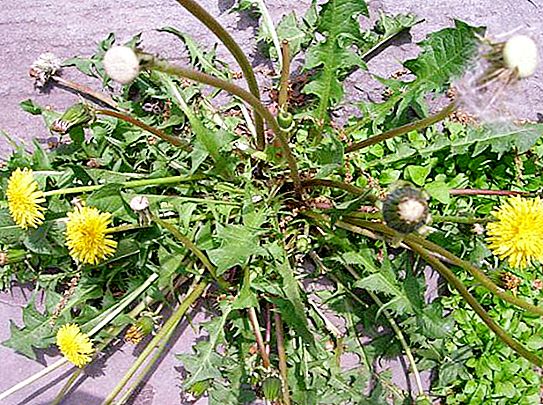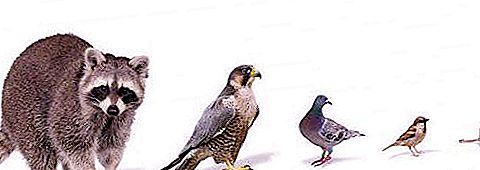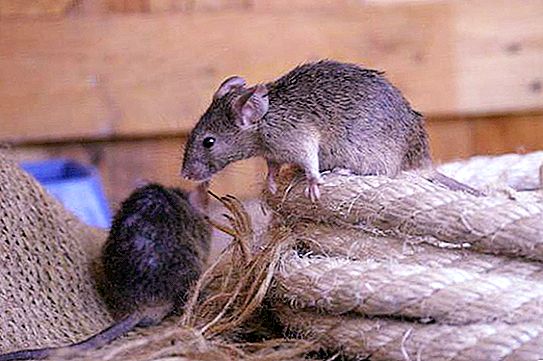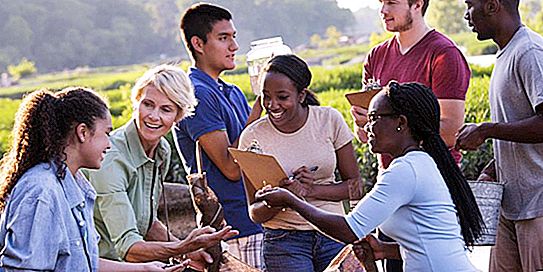What is a synanthropic species? By this concept is meant organisms whose existence is associated with human activity. If we consider animals, then this category includes species whose diet is built on household waste, human food. Since a person and his lifestyle are a good source of food, synanthropic organisms rarely leave the settlement. Let us examine in detail what such species are?
Synanthropic plants

Synanthropic plants are a rather heterogeneous group of organisms. They are divided as follows:
- Segetal plants - settled on plantations of cultivated plants and in the fields. The bulk are weeds. Some segetal plants have a clear attachment to a certain culture, without which they cannot develop, multiply and exist as a whole.
- Ruderal plants - rarely found among crops. Most often settled in landfills, wastelands, grow on the streets, by roads, near dwellings. Unlike the previous category of synanthropic plants, they do not cause practical harm to humans, they only spoil the general appearance of well-groomed territories.
- Advent plants are species that are transported by long-distance vehicles between remote regions of the planet. For this reason, they are often found near sea and river docks, airports, factories, railway stations. In the presence of suitable conditions for growth and reproduction, they can subsequently go into the category of ruderal or segetal plants.
Synanthropic insects

How did insects that belong to the category of synanthropes originate? It is noteworthy that initially it was a person who came to their house, occupying more and more new habitats. Some creatures, such as spiders, a black cockroach, inhabited caves in prehistoric times. Gradually, people learned to build their own homes. Together with them insects moved from primitive shelters. The reason for this behavior was the emergence of quick access to unlimited food.
All insects that are considered synanthropes can be divided into several categories:
- Intracity - able to exist without leaving the boundaries of human settlements. However, they can inhabit not only houses, but also be located outside them. These include ants, mosquitoes, flies, mosquitoes. With the onset of cold weather, the synanthropic species of insects can climb into homes and winter in secluded places.
- Intra house - live exclusively inside houses. Vivid examples are a black cockroach, bug, flea, clothes moth.
What harm do synanthropic insects do to humans?
Obviously, living next door is beneficial only to synanthropic insects, but not to humans. Most of these organisms are parasites that cause harm to human health, destroy our homes, pollute food, spoil household items, clothes, etc. The insects of this category in the overwhelming majority come in contact with sewage, feed on decaying waste, and therefore are epidemiologically dangerous.
Synanthropic animal species - main groups

Animals that belong to the category of synanthropes can be divided into several separate groups:
- Optional - rodents, small predators, some birds, which only slightly depend on humans. Such species try to avoid direct contact with people. Most often live on the periphery of settlements, in particular, live in tree plantings, on crops of cultivated plants.
- Obligatory - species that are seriously dependent on the person and his activities. Not able to exist outside the settlements. During the development of civilization, such animals constantly followed humans, which allowed them to expand their habitats. Bright representatives of obligate species are mice in the house, pigeons, rats.
Rodents

Among synanthropic animals, a special place is occupied by rodents, which have adapted to close proximity with humans. Despite their small size, they have good survivability in almost any environment. Highlands, arid regions, cold, tropical climate - all this is not an obstacle to the growth of the rodent population, which are synanthropic.
The problem of the mass resettlement of such animals in human settlements remains relevant to this day. Mice in the house and rats began to inhabit with us from the moment when a person began to rashly throw away waste nearby his own home. However, the phenomenon became widespread during the development of agriculture, when people began to grow grain and raise livestock.
Animals of this category can be characterized as follows:
- Such rodents do not reach such impressive sizes as their relatives that live in natural, wild conditions.
- The diet is mainly cereal, as well as animal feed. In the absence of the latter are able to exist quietly, eating waste, greens. They can feed on insects, which also belong to the category of synanthropes.
- For a long time they live within the same human settlement. With the disappearance of the source of food, they are able to cover fairly impressive distances by large colonies in search of other suitable places where there is access to food.
- Able to regularly give offspring, which allowed synanthropic rodents to captivate the whole world.
- Like people, they have rather complex relationships in groups. Their conditional society is divided into hierarchical, social structures.
- Synanthropic rodents are absolutely not confused by the close presence of people. In most rats and domestic mice, humans have little to no fear. The only exceptions are pets, which can be dangerous for them.
Synanthropic birds

The main feature of synanthropic birds is their sedentary lifestyle. They settle on the roofs of houses, build nests in parks and other green areas where there is close access to food. Today, there are certain types of waterfowl that no longer fly to warmer climes with the onset of cold weather, but winter on non-freezing sedimentation tanks.
What is the danger of synanthropic birds?
Species such as sparrows, pigeons and crows harm the architecture of the settlements. However, the main danger is the spread of infections. There are several viral diseases that can be transmitted from them to humans, in particular bird flu. Some outbreaks of epidemics of dangerous diseases among people are the result of migrations of synanthropic birds.




